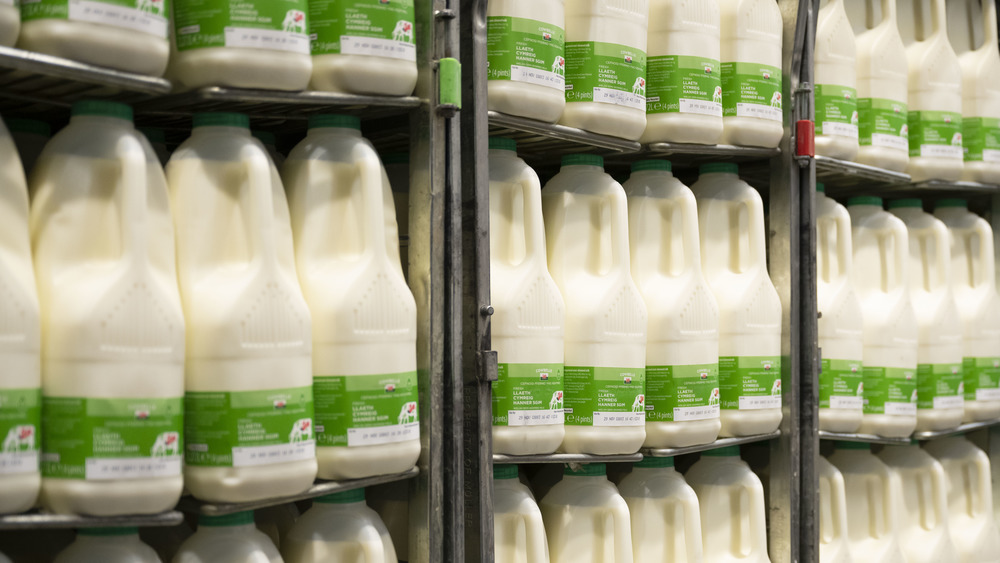Skim Vs. Reduced-Fat: Which Type Of Milk Is More Nutritious?
Have you ever found yourself in the dairy aisle at the grocery store, staring at all the kinds of milk and wondering what the difference even is, anyways? There are so many options — both dairy and not — and yet, most people tend to pick the milk their family has been drinking their entire life without a second thought. Whether you're on team skim milk or team two percent, read on to learn about what to look for the next time you're wandering through the dairy aisle.
First, let's break down the main categories of milk. According to U.S. Dairy, the percentage value on the front of a milk carton actually represents the amount of fat in the bottle by weight. So, a carton of reduced-fat milk carries two percent of fat in total.
Believe it or not, the United States Department of Agriculture reports that the milk market began to plummet in recent years. In 2013, the organization found that per capita milk consumption sat at 0.61 cup-equivalents per day — that's down from 0.98 cup-equivalents back in 1970.
Even though Americans are slowly moving away from consuming regular milk in favor of non-dairy options like oat milk, dairy milk — no matter the percentage — still has a well-earned space on grocery store shelves thanks to the many nutrients it provides.
Skim milk offers more bang for your buck in terms of calories
Chances are, you've heard this age-old myth: Skim milk is just regular milk, but watered down. That's far from the truth, says Got Milk. As a matter of fact, U.S. Dairy explains that in order to properly control the fat content in each type of milk, all of the fat is stripped and added back into each bottle accordingly. In the case of skim milk, most of that saturated fat is never added back in, making it fat-free.
Generally speaking, skim milk is a healthier option for those watching their diet. It's an even better option for those trying to steer clear of fatty foods. Fat-free milk actually packs the same nutritional punch as whole milk, minus the fat and some calories (via Got Milk). According to LEAFtv, a one cup serving of skim milk contains just 86 calories and under one gram of fat, making it a great option to balance out the sugary cereal habit you just can't break.
Reduced-fat milk is still a nutritious option, too
Reduced-fat milk can still be worked into any calorie-centric diet at just 102 calories per cup, reports Healthline. And aside from its saturated fat content, the nutrients of reduced-fat milk are surprisingly similar to its fat-free counterpart.
In terms of vitamins and minerals, skim milk provides 25 percent of the recommended daily intake of phosphorus and ten percent of the recommended amount of vitamin A. Reduced-fat milk isn't too far off, offering nine percent of your daily dose of vitamin A and 23 percent of phosphorus (via LEAFtv).
Vitamins and minerals may not be the only thing to consider if you're picking between the two, though. The Florida Department of Health issued a report back in 2006, highlighting that reduced-fat milk still contains two percent of saturated fat — that's twice as much as a low-fat, one percent alternative. To put that into perspective, that's the same amount of saturated fat as a slice and a half of pepperoni pizza (via Florida Department of Health). So, if the "watery" taste of fat-free milk doesn't bother your taste buds too much, it may be wise to make the occasional swap to skim.


